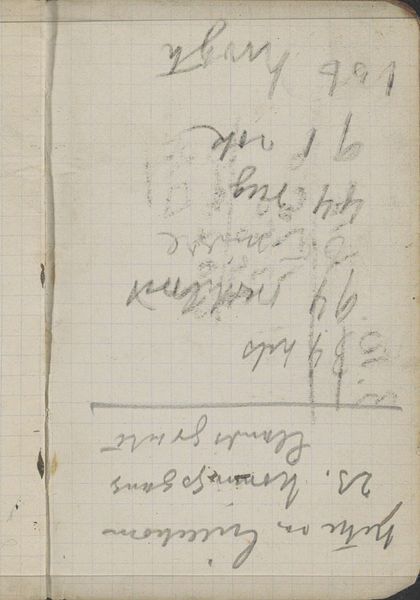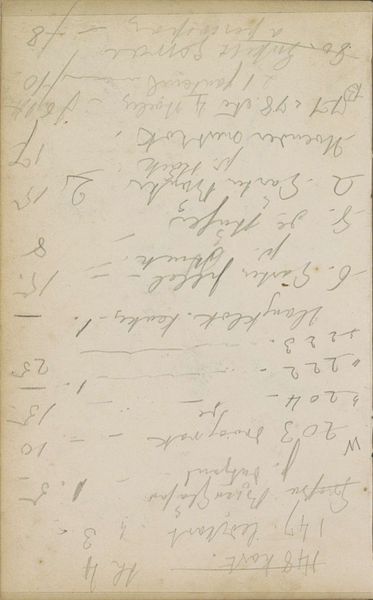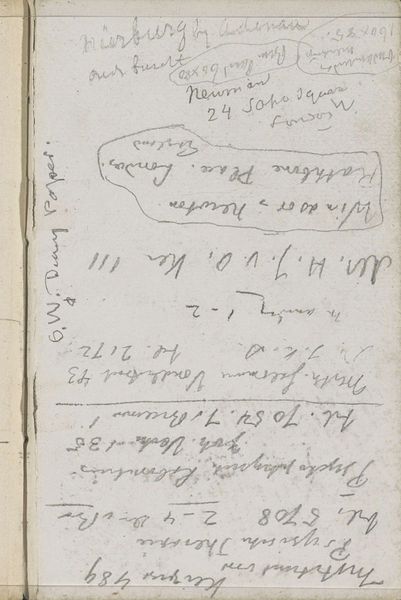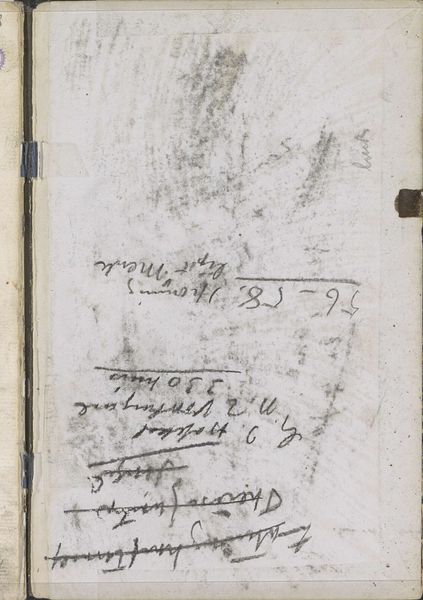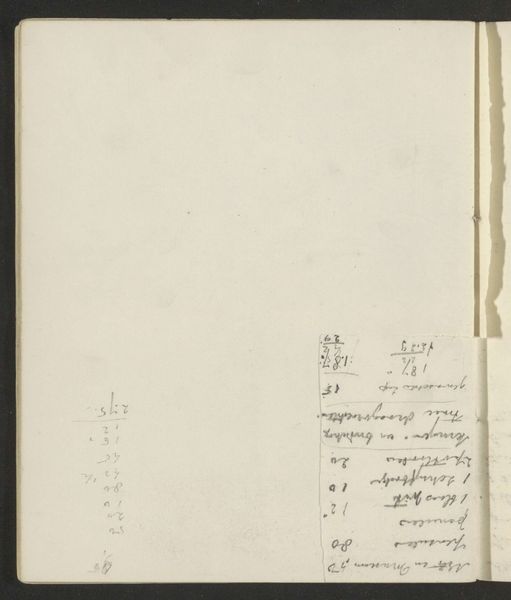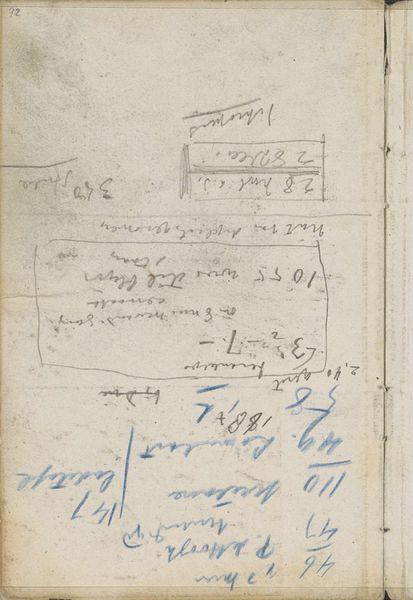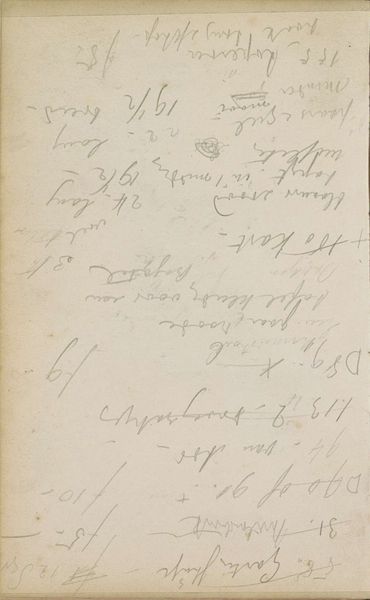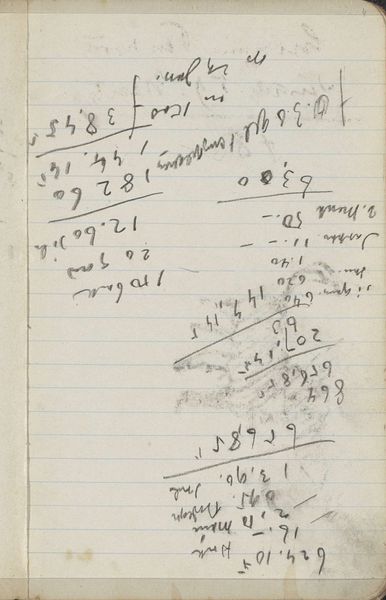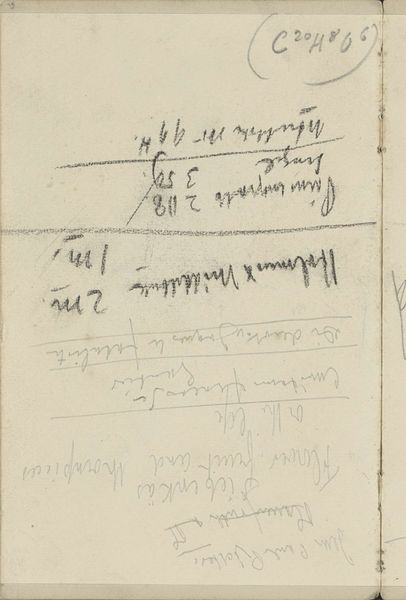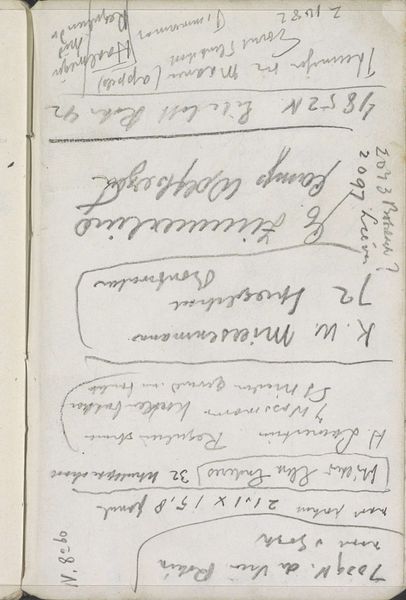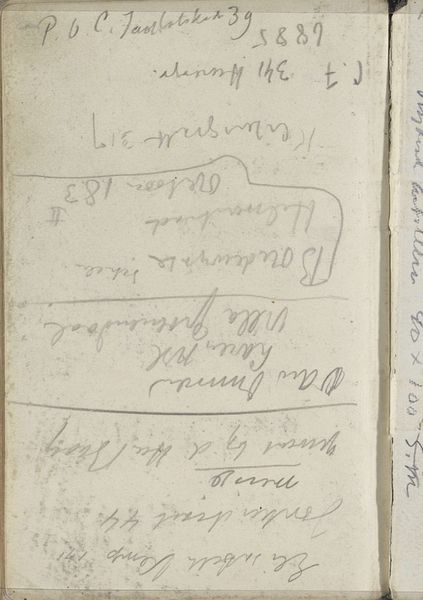
Copyright: Rijks Museum: Open Domain
Editor: This is “Annotaties,” dating from 1896-1897 by George Hendrik Breitner, a mixed-media drawing on paper currently held at the Rijksmuseum. It feels intimate, like a peek into the artist’s personal notebook. The handwritten text is intriguing. What stands out to you? Curator: This piece, precisely because it is so personal, becomes intensely political. Breitner, often celebrated as a chronicler of modern life in Amsterdam, here offers us raw, unfiltered glimpses into his process. I see this sketchbook not just as a collection of notes but as a radical act of self-documentation. The hurried handwriting, the fragmented thoughts—they disrupt the traditional, idealized narrative of the artist. It becomes a powerful statement on the value of process over product, echoing feminist critiques of a patriarchal art world that privileges the finished, marketable masterpiece. Do you see the echoes of class dynamics as well in the quick notations, almost resisting the preciousness associated with art production? Editor: That’s interesting. I hadn't considered the class dynamics inherent in something so seemingly private. So, you’re suggesting that even his method of note-taking challenges established art historical narratives? Curator: Exactly! Consider how artistic value is constructed. Breitner’s 'Annotations', is almost a rebellious act, a challenge to those traditional frameworks. The act of jotting things down challenges the notion of fine art and artistic merit itself. The way he chooses to capture his thoughts – a departure from academic precision that embodies authenticity. Editor: I see, framing "Annotations" in this light really broadens its potential meanings. I was so focused on the intimacy, but now I recognize this deliberate undercutting of artistic expectations. Curator: It’s in these ‘unimportant’ and ‘informal’ glimpses where true subversion lies. By putting such items on display, we celebrate more democractic and open forms of artistic expression. Editor: I’ll never look at a sketchbook the same way again. It really showcases the power of contextualising even seemingly small things, using broader narratives of identity and society. Curator: Precisely, that's the aim! By examining such things, we may start to uncover truths about artistic expressions that traditional art criticism had long overlooked.
Comments
No comments
Be the first to comment and join the conversation on the ultimate creative platform.
